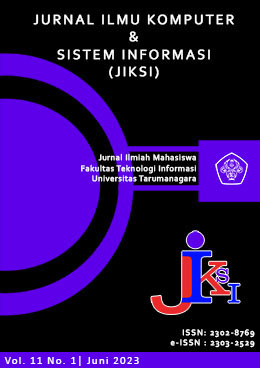PERBANDINGAN LSTM DAN ELM DALAM MEMPREDIKSI HARGA PANGAN KOTA TASIKMALAYA
Main Article Content
Abstract
Humans have needs that must be met, one of which is the need for food, but food prices often change. Factors that affect price changes occur because the amount of demand is high while the supply is small. Making predictions about price changes will be very helpful to get an idea of the pattern of price changes. Therefore making predictions from price patterns is useful for providing information to the public. Predictions regarding price changes can be made using many methods. Long Short-Term Memory (LSTM) and Extreme Learning Machine (ELM) are several methods that can be used to predict time series data, these two methods can provide an overview of the predictions made. The results of the study show that both algorithms have good results in terms of the the evaluation value. The evaluation results showed no significant difference between the two algorithms. The evaluation value of the rice commodity showed that ELM tended to be better with MAE values of 6,721, MAPE 0.061%, MSE 115,281, RMSE 10,737 and CV 3,699%, while LSTM with MAE 31,707, MAPE 0.286%, MSE 1927.633, RMSE 43.905 and CV 3.655%. However, for other commodities, LSTM can produce a better evaluation value.
Article Details

This work is licensed under a Creative Commons Attribution-NonCommercial-ShareAlike 4.0 International License.
This work is licensed under a Jurnal Komunikasi Creative Commons Attribution-ShareAlike 4.0 International License.
References
International Labour Office (Geneva), 1976, “Employment, growth, and basic needs : a one-world problem : report of the Director-General of the International Labour Office”, Geneva : International Labour Office.
Kementerian Pertahanan Republik Indonesia, Undang-Undang Republik Indonesia Nomor 18 Tahun 2018 Tentang Pangan, https://www.kemhan.go.id/ppid/wp-content/uploads/sites/2/2016/09/uu18-2012bt.pdf.
Badan Pusat Statistik Provinsi Jawa Barat, 2023, “Persentase Penduduk Miskin (Persen)”, 2020-2022, https://jabar.bps.go.id/indicator/23/51/1/persentase-penduduk-miskin.html.
Triyanna Widiyaningtyas, Ilham Ari Elbaith Zaeni, Tyas Ismi Zahrani, 2020, “Food Commodity Price Prediction in East Java Using Extreme Learning Machine (ELM) Method”, https://www.researchgate.net/publication/346423292_Food_Commodity_Price_Prediction_in_East_Java_Using_Extreme_Learning_Machine_ELM_Method/.
Teny Handhayani, 2023.” An integrated analysis of air pollution and meteorological conditions in Jakarta”, https://www.nature.com/articles/s41598-023-32817-9.
Kristoko Dwi Hartomo, 2006, “Implementasi Metode Interpolasi Linear untuk Pembesaran Resolusi Citra”, TEKNOIN, Vol. 11, No.3.
Inggih Permana, Febi Nur Salisah, 2022, “Pengaruh Normalisasi Data Terhadap Performa Hasil Klasifikasi Algoritma Backpropagation”, Indonesian Journal of Informatic Research and Software Engineering (IJIRSE), Vol. 2. No.1.
Rizki Trisna Rully Abadi, dan Irwan Budi, 2021, “Penerapan metode long short term memory dalam memprediksi jumlah kasus covid-19”, http://etheses.uin-malang.ac.id/32662/.
Guang-Bin Huang, Qin-Yu Zhu, Chee-Kheong Siew, 2006, “Extreme learning machine: Theory and applications”, Neurocomputing, Vol.70, No.1-3.
Galih Ariwanda, 2019, “Prediksi Harga Cabai Rawit di Kota Malang Menggunakan Algoritme Extreme Learning Machine (ELM)”, Jurnal Pengembangan Teknologi Informasi dan Ilmu Komputer, Vol. 3, No. 6.
Agus Sulaiman, Asep Juarna, 2021, ”Peramalan Tingkat Pengangguran di Indonesia Menggunakan Metode Time Series dengan Model Arima dan Holt-Winters”, Jurnal Ilmiah Informatika Komputer, Vol. 26, No. 1.
Haldi Budiman, 2016, “Analisis dan Perbandingan Akurasi Model Prediksi Rentet Waktu Support Vector Machines dengan Support Vector Machines Particle Swarm Optimization untuk Arus Lalu Lintas Jangka Pendek”, Information System and Informatics Journal (SYSTEMIC), Vol.2, No.1.
Adi Setiawan, 2012, “Perbandingan Koefisien Variasi Antara 2 Sampel dengan Metode Bootstrap”, d'CARTESIAN:Jurnal Matematika dan Aplikasi, Vol. 1 No. 1.



